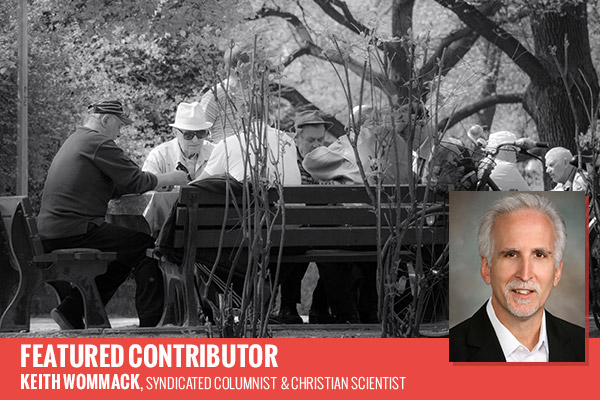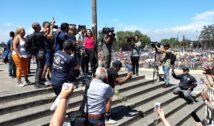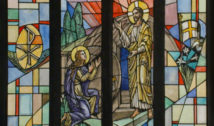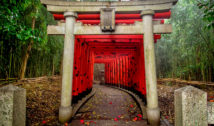
How Diet and Exercise Might Not Be the Only Way to Stay Healthy
- By Keith Wommack --
- 04 Jul 2016 --

Community spirit might be more beneficial to health than we think.
One hundred and fifty years ago, after a couple of decades of research, trials, and victories, a woman in New England – Mary Baker Eddy – discovered it was possible to experience health regardless of lifestyle, diet, and genes.
How Diet and Exercise Might Not Be the Only Way to Stay Healthy[/tweetthis]
In 1866 she had a significant healing that pointed away from these presumed materialistic aids to health in a way that the citizens of Roseto, Pennsylvania, just under a century later, might have felt some kinship with.
WHY?
Because, during a ten-year span from 1955 to 1965, the residents, mostly immigrants from Roseto Valfortore, Italy, were found to be surprisingly healthier than the rest of the United States. Yet it was proved that their consistent wellbeing couldn’t be linked to those commonly accepted influences of lifestyle, diet, or genes.
HOW?
By scientists, curious about their profound healthy conditions. In 1961, an extensive study was launched into their lives. Findings from the research showed that residents of a nearby town, Bangor, didn’t exhibit such consistent pictures of health. Just one mile separated the Bangor residents from the predictable and robust health caused by what researchers refer to as “The Roseto Effect”.
Once their research had concluded that the health of Roseto residents wasn’t due to lifestyle or diet, the researchers turned their attention to the family gene pools for evidences of extraordinary health tendencies. They examined the lives of immigrants from Roseto Valfortore, Italy, who resided in other parts of the United States and found that they were no healthier than the average American.
So “genes” were scratched off the list of potential causes.
Next, researchers looked at the Roseto water supply and quality of medical care, but came up empty. Roseto’s water source was the same as the neighboring towns of Nazareth and Bangor. All three communities also shared the same hospital.
In the end, researchers concluded that the Roseto Effect had no medical or physical explanation. They and others chalked it up to the effect of people nourishing people. The Rosetans daily visited one another. They stopped to chat or cook for each other in their backyards. Extended family clans were the norm. Three generations commonly lived under the same roof. They also had the calming and unifying effect of regularly attending church. And there were twenty-two civic associations in a town of less than two thousand people.
Sadly, Roseto’s oasis of healthy living faded. Extended family clans gave way to single family homes and helping others gave way to self-absorbed lives. As social ties weakened, so did the Roseto Effect. Soon, the physical health of the Rosetans mirrored the rest of Americans.
The Roseto story pokes holes in the theories that say hygiene, physical fitness, and diet regulation are what ultimately keep us healthy. So did the wise sayings of someone whom the Bible records as having a remarkable track record of helping others gain and retain health. Jesus is quoted as saying, “I tell you not to worry about your life. Don’t worry about having something to eat, drink, or wear. Isn’t life more than food or clothing?”
After the researchers left Roseto, there remained unanswered questions. How can love and heartfelt consideration from others, and for others, cause such measurable physiological differences? Do people nourish people? Or is there something more behind that? What drove the 1960s Rosetans to care for one another? What was the source of their family and community spirit?
Perhaps, the answer to those questions – the final piece of the 1960s Roseto puzzle – had already been discovered in the 1860s when Mary Baker Eddy found that health had a spiritual cause. Could it be that the nourishing care and community spirit in 1960 were divinely animated? If so, then the Roseto Effect could be considered the Christ-Effect because, as many are proving in their lives today, health-giving and healing love such as the Roseto residents expressed and experienced can be found in the Christ, God’s goodness, love, and power active in human affairs.
Health regardless of lifestyle, diet, and genes?: The Roseto story certainly pokes holes in the theories that … http://t.co/BT3IFOt2U0
— Bertha Bookman (@bertha_bookman) June 10, 2013
Eddy called her spiritual discovery Christian Science because of Christ’s consistent availability to care for individual and community needs. And years before the Roseto story unfolded, writing about the broad effects of Christ, Eddy explained how Christian Science erases from our thinking the belief we’re merely made up of matter and in need of material things to sustain our health and instead it “induces rest in God, divine Love, as caring for all the conditions requisite for the well-being of man.”
“As power divine is the healer, why should mortals concern themselves with the chemistry of food? Jesus said: 'Take no thought what ye shall eat,'” she added.
We don’t create the love we lavish on others. As spiritual beings, created by God, we reflect the boundless love that is sourced in the Divine. The Roseto Effect of loving care that benefitted the town’s’ residents can be even more consistently experienced when the cause of love and life is seen to be divine and we begin to increasingly express a more spiritual wisdom and compassion.



















